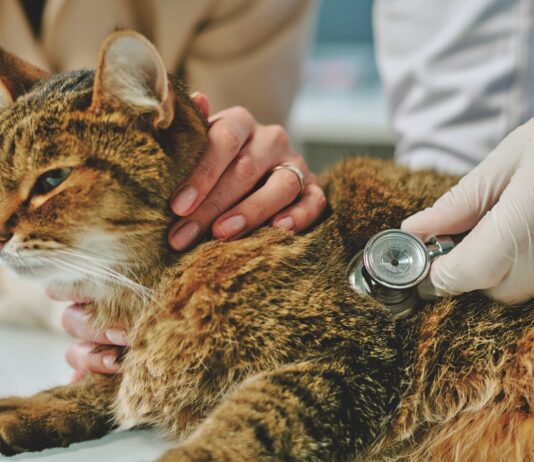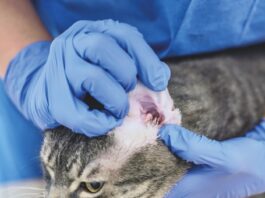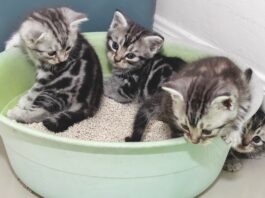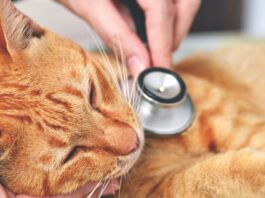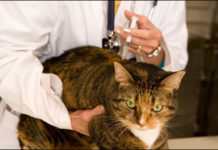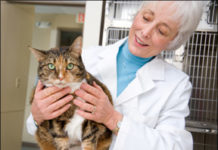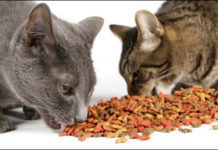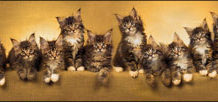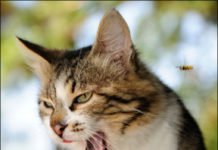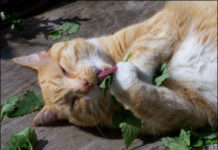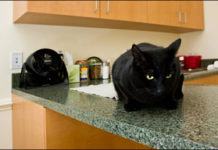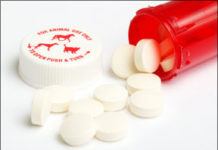New Guidelines Released for Diabetes
The American Animal Hospital Association has recently released new guidelines for managing diabetes in cats and dogs. The "AAHA Diabetes Management Guidelines for Dogs and Cats" (www.aahanet.org/) provides current recommendations for the diagnosis, management and treatment of diabetes mellitus (DM).
Short Takes: August 2010
Diabetes mellitus (DM) is a common endocrine disease in cats, and it is becoming a model for DM in humans because cats develop a form of the disease that is similar to the human type-2 diabetes mellitus. Amylin is a normal secretory product of pancreatic beta cells, and it plays an important role in controlling nutrient fluctuations. Amylin has become an established therapy along with insulin in human diabetics because it reduces post-prandial glucagon secretion and slows gastric emptying. This study ("Amylin reduces plasma glucagon concentration in cats," The Veterinary Journal, 2010) was the first to investigate if amylin reduces plasma glucagon levels in cats.
Feline Respiratory Infections
Your best friends cat always seems to be ill. During your occasional visits to her home, the cat is often wheezing, sneezing and coughing. Her eyes are red and watery, and she acts lethargic. Your friend says that these signs tend to persist for a week or so - but then she seems to be all right again for a while. Its quite likely that the cat is suffering from a deeply rooted upper respiratory infection, a highly contagious disease affecting her nose, sinuses, pharynx and larynx - the structures that filter, heat and dehumidify inhaled air before it flows to her lungs.
Get Some Relief for Your Arthritic Cat
The good news is that cats are living longer these days, thanks largely to advances in feline nutrition and veterinary medicine in general. The bad news, however, is that these longer life spans give cats a greater chance of developing arthritis - a painful, debilitating and potentially crippling joint disease that is predominantly age-related. All Too Common. In a study conducted a few years ago, researchers carefully analyzed X-rays of the spines and limbs of 100 middle-aged or elderly cats (10 years of age or older).
Feeding Time: How Many Meals?
Check the pet food aisle at your local supermarket, and youll find countless varieties of food to entice your cat. Feed your cat too little or the wrong kind of food, and he wont maintain good health. Feed him too much, and hell get fat. Although the food you feed your cat should be complete and balanced, the simple answer to how often you should feed him is that it depends on your pet and your particular circumstances. Age Matters. Kittens require more food per pound of body weight to support their growth than do adult cats, and therefore should be fed more often throughout the day.
FIP: What You Need to Know
Among the various illnesses that can bring an end to your cats life, none is more lethal than feline infectious peritonitis (FIP), which primarily affects young cats (less than two years of age) and cats that are 10 years of age and older. While the name of the disease suggests an inflammation solely involving the peritoneum - the membrane that lines the feline abdominal cavity and covers the organs that lie within it - the condition can ravage an affected animals entire system.
Danger: Poisonous Insects
The warmer weather brings sunshine, fresh breezes, singing birds - and bugs. As a conscientious pet owner, its likely that you wonder if its safe for your cat to eat bugs. The answer depends on what kind of bug youre talking about. According to Steven Hansen, DVM, ASPCA Veterinary Toxicologist and Senior Vice President of Animal Health Services of the national ASPCA Animal Poison Control Center, "most calls involve animals eating things they shouldnt, including bugs."
Short Takes: July 2010
This study ("The influence of olfactory stimulation on the behaviour of cats housed in a rescue shelter" in Applied Animal Behavior Science, 2010) examined the impact of environmental enrichment in an animal shelter when "novel smells" (odors other than those normally encountered in the shelter environment) were introduced in the cats enclosure. The odor exposure was presented as odorless cloth, or cloths permeated with the odor of rabbit, catnip or lavender.
Sorting Out Elimination Disorders
Many serious feline conditions - some of them even life-threatening - commonly display themselves in the excessive passage of watery feces (diarrhea); the painful retention of dry, hardened feces (constipation); the frequent voiding of abnormally large amounts of urine (polyuria); or difficult, perhaps even impossible, urination (dysuria).
Understand Feline Lymphatic Disease
The feline lymphatic system influences every aspect of a cats physical health According to Margaret McEntee, DVM, a professor of oncology at Cornell Universitys College of Veterinary Medicine, owners should be able to recognize the signs that could indicate feline lymphoma, a potentially deadly cancer of the lymphatic system that can affect many areas of a cats body, including its liver, gastrointestinal system spleen and skin. Lymphoma is the most frequently observed of all feline cancers, explains Dr. McEntee - even more common than mammary cancer. At the Cornell University Hospital for Animals (CUHA), she notes, "We see about 40 cats or so each year that have this disease, and the incidence may be even higher than that at other veterinary clinics."
Short Takes: June 2010
Pet owners may not realize that retention of the tablets or capsules of certain drugs (e.g., doxycycline and clindamycin) in the esophagus of the cat can cause inflammation and stricture formation. Experts currently recommend that cats should never be given medication "dry" - instead, any pill or capsule should be followed with a food treat or a bolus of water. This study ("A comparative study evaluating the esophageal transit time of eight healthy cats when pilled with the FlavoRx pill glide versus pill delivery treats" in the Journal of Feline Medicine & Surgery, 2010) was designed to evaluate the esophageal transit time of tablets and capsules when administered with either the FlavoRx pill glide or Greenies Pill Pockets.
Home Care for the Sick Cat
When we share our lives with an animal companion, we hope that our pet will live a long, healthy and happy life. When illness strikes - especially one of a chronic nature - the devoted pet owner faces a daunting challenge. Obviously, medical care will be necessary, which can be expensive and complicated. For some, however, the more difficult aspect is the emotional component. While modern-day cats are certainly receiving better veterinary care and improved nutrition, theyre also living longer. Of course, this is a blessing for cat lovers - but age also brings with it the greater likelihood of chronic disease and illness.

